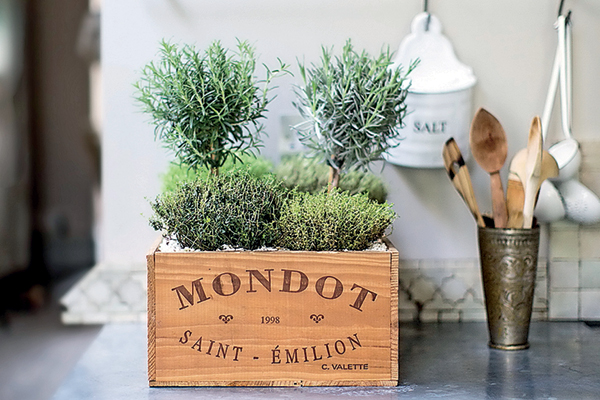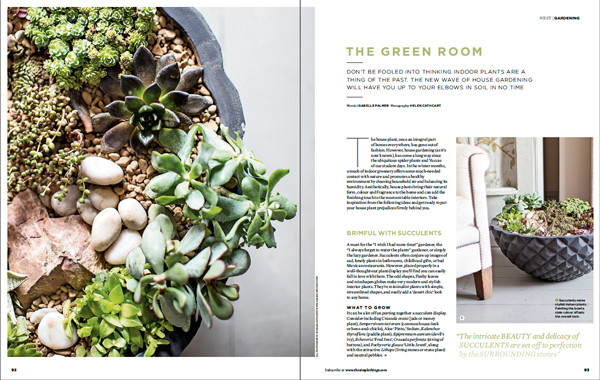
Add colour to your kitchen and flavour to your food…and win some brilliant freebies along the way! Choose a few herbs to grow indoors and you'll be killing two birds with one stone. You'll instantly be able to enliven home-cooked dishes with fresh flavours as well as introducing a bit of colour and interest in your kitchen while you're at it.
Indoor herbs are easy to grow providing you give them plenty of light and water them regularly - though not too much as their roots won't appreciate 'sitting' in water. Read on for our top tips, and win with Carbon Gold.
Choose robust varieties like rosemary, bay, thyme, mint, basil, parsley and hyssop if you're new to growing and buy from a good independent garden nursery. Don't be tempted to pot up supermarket-bought plants because they've been raised in specific conditions (warm temperatures and often grown in water) which make them more delicate and less likely to thrive for longer than the few weeks shelf-life they've been raised for.

Says The Simple Things' Gardening Editor, Cinead McTernan:
'I went for hyssop, which I can add to soups and stews and when the weather warms up a bit, salads. I use thyme in lots of cooking and found a really pretty variety, 'Foxley' from my local garden centre.'

Go for herbs with fairly shallow roots rather than long, tap roots if you're growing in smaller indoor pots, again to give them the best chance of growing healthily. You can use quirky containers and recycle tins, pots, and other vessels but make sure they're big enough to give the plants chance to develop a good root system, and if they don't have a drainage hole (such as a very large teapot), add a few stones to create a layer of drainage.

Fill your container with compost - go for peat-free if you can and try something like Carbon Gold'sGroChar, which is fantastic for retaining moisture in the soil. You won't have to water so often, which is ideal if you're often out and about. Cinead bought two thyme plants, dividing and planting one in the Allison's bread tin using Grochar and leaving the other in its pot.
She says: 'I often discover that the one left in the pot has dried out and I've had issues with browning leaves due to irregular watering (or lack of watering). No such problems with GroChar. Top tip: If you're using GroChar, you might think the soil is dry. Use your finger to test just underneath the top layer of soil and check the moisture levels, watering only when this feels dry.'

Don't be afraid to divide herbs, teasing the roots apart carefully, to end up with two or three plants rather than just one.

Try sowing seeds too - micro herbs are a great idea as they'll be ready to harvest in a matter of weeks and the small leaves are packed with an intense flavour compared with the mature leaves. Again, Carbon Gold have a really good seed sowing compost which I'm going to try. I've chosen 3 varieties from Jekka's Herb Farm - Bull's Blood, Wild Rocket and Red Frills Mustard. Check back in a few weeks to see how my micro seeds get on...
COMPETITION
Add colour to your kitchen and flavour to your food…and win some brilliant freebies along the way!
Give seeds the best start in Carbon Gold’s Seed Compost and add a dash of glamour by planting them in something out of the ordinary – vintage tins, charity shop teapots or even a colourful wellington boot!
Carbon Gold would love to hear about the most quirky container you’d use to house your herbs.
Their favourite idea will win a Home Grower Starter Pack worth £51.95 and five runners up will win a 1kg tube of Soil Improver each.

You have until April 30 2014 to share your most inspired ideas! Here’s how to take part…
1. Simply ‘like’ the Carbon Gold Facebook page
2. Seek out The Simple Things competition poster nestled amongst Carbon Gold’s Facebook pictures
3. Leave a comment underneath the poster, sharing your creative container concepts.
Competition closes 30 April 2014











